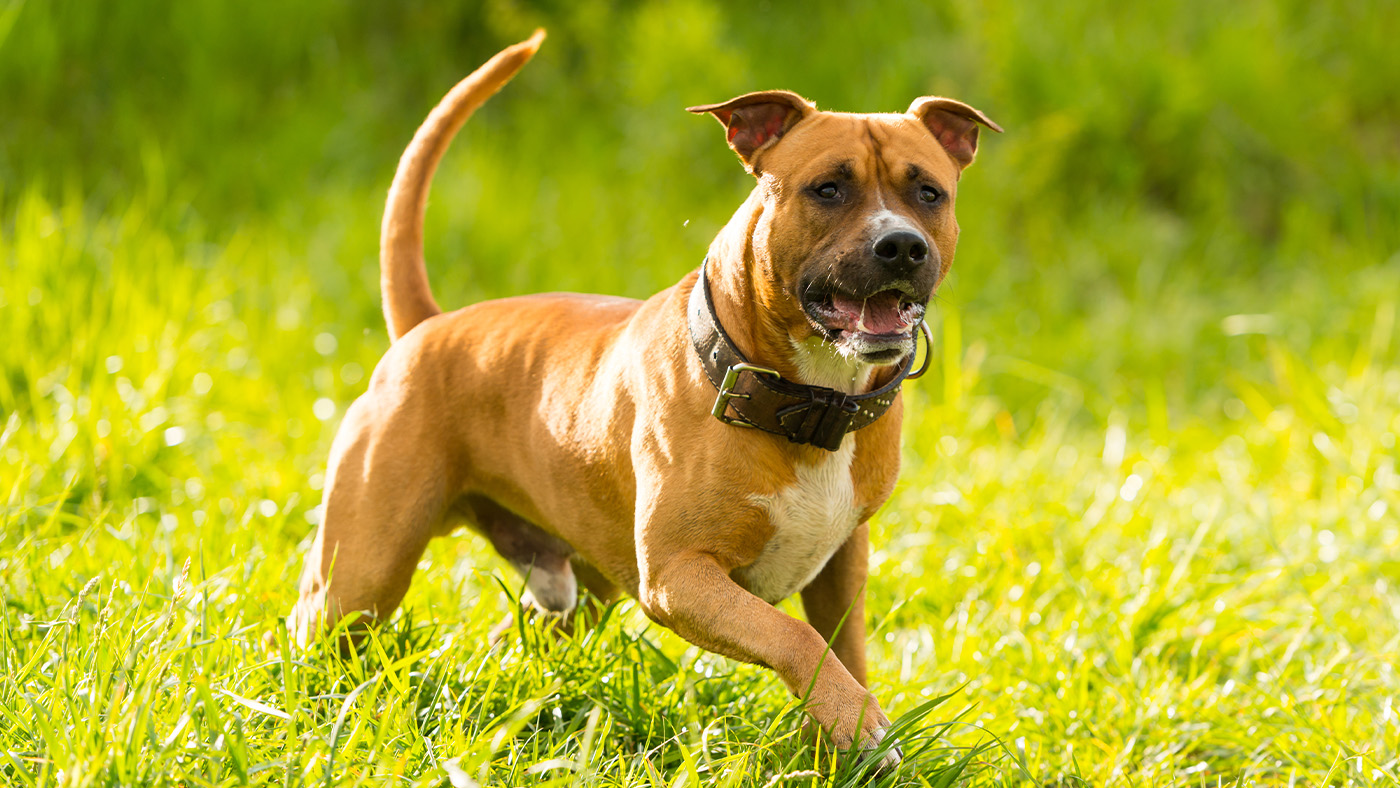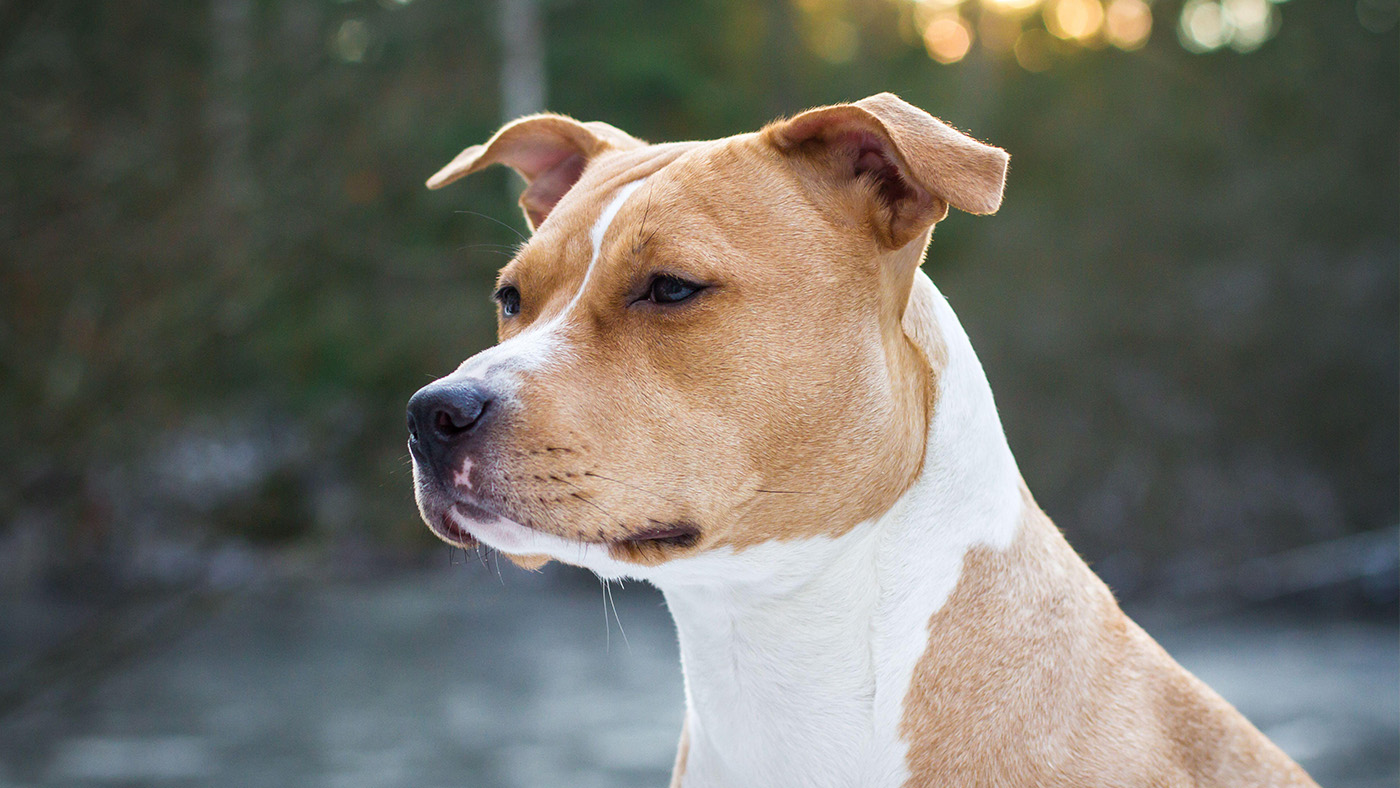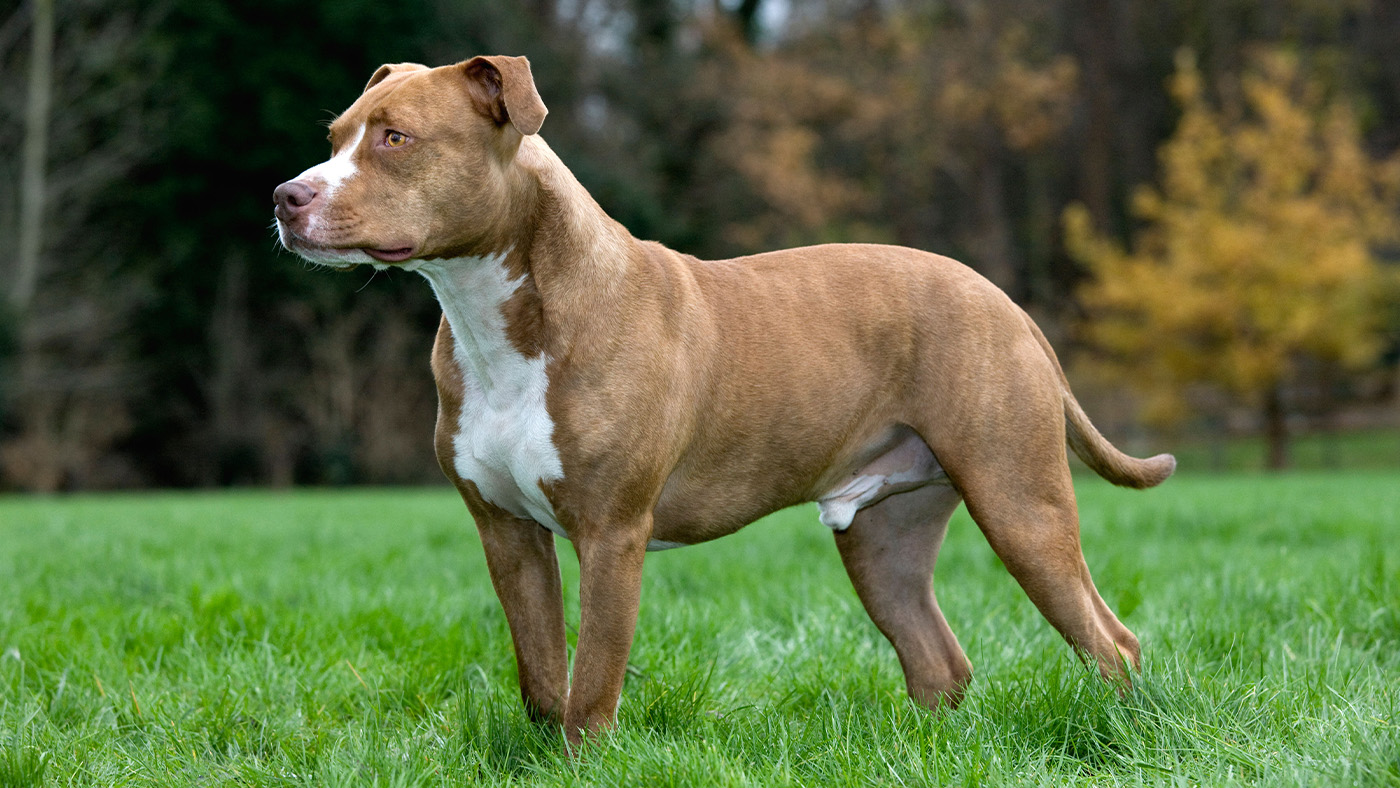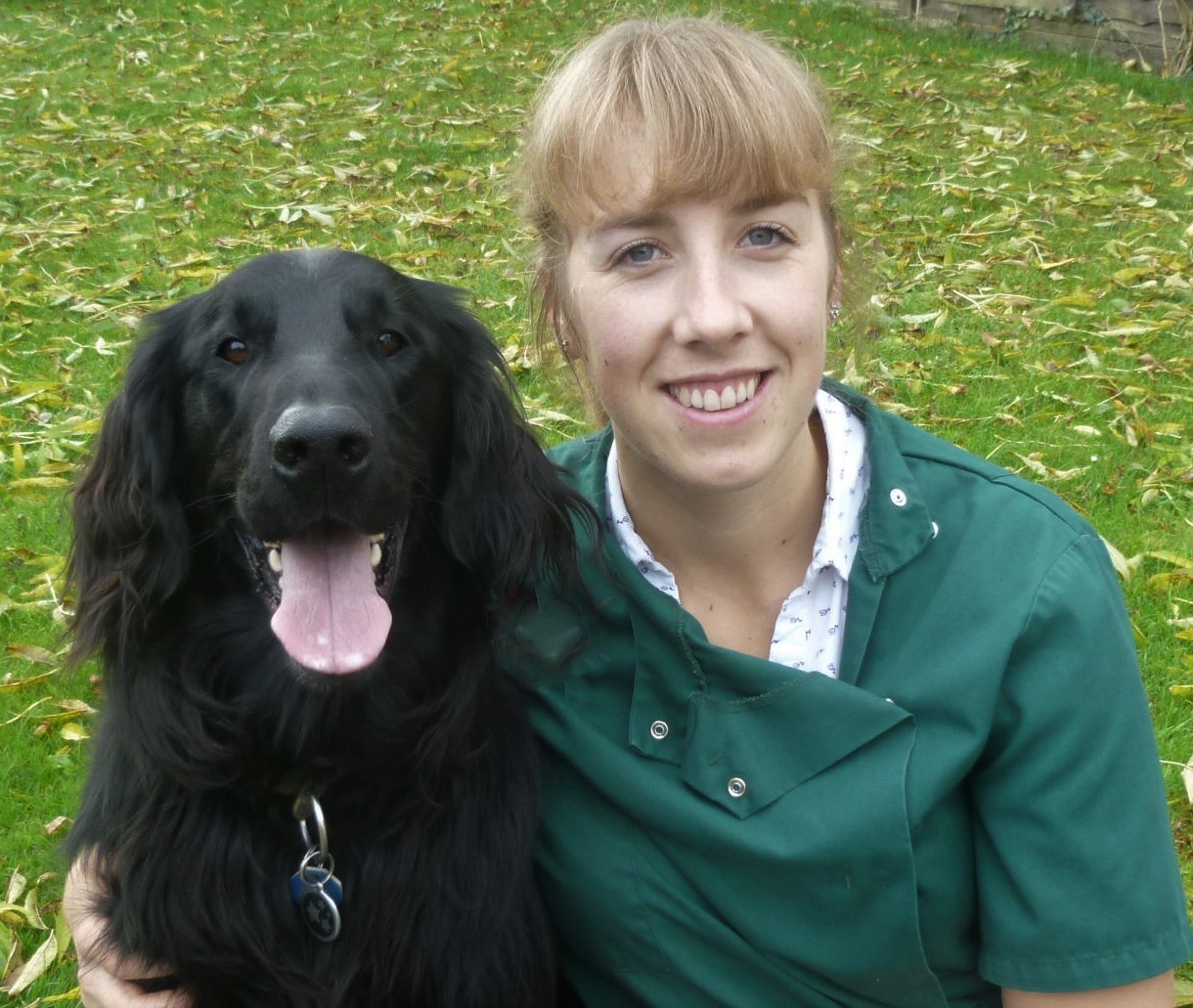American Staffordshire Terriers are devoted and loyal but, if you can, should you get one?
Solidly built, with strong jaws, it’s easy to see why people are wary of AmStaffs but there are many redeeming features


Also known as: AmStaffs
Life expectancy: 12–16 years
Size: 18–19 inches (male); 17–18-inches (female)
Coat: Stiff and glossy
Temperament: Courageous, loyal, friendly, devoted
Exercise needs: 1–2 hours daily
Origin/native country: England, UK
Stocky and muscular, the American Staffordshire Terrier has an imposing appearance. They are a controversial and are banned breed in some countries and states. But while you may think that makes them unworthy of a guide, there are still many places where you can bring one into your home. And, as always, the question is whether they will be be a good fit for you?
The breed certainly has many positive qualities. They’re loving and affectionate and they form close bonds with children. But they do need to be handled with care and they also need to be kept busy. To help explain the ins and outs of owning an American Staffordshire Terrier, we’ve enlisted the help of expert vet Dr Rebecca MacMillan.
Do American Staffordshire Terriers need a lot of exercise?
American Staffordshire Terriers are very athletic dogs and you need to ensure they get plenty of physical stimulation every day.
“This energetic, muscular breed needs one to two hours of exercise daily, depending on their health and age,” Dr MacMillan says. But bear in mind that the type of exercise is important.
Ideally, it needs to be as vigorous as you can make it so engage in fun games to play with dogs, such as of tug-of-war (which is great for strengthening your bond with a dog) – anything to burn off that excess energy. You should also, of course, go on lengthy walks or runs and maybe some of the best dog puzzle toys.
Since they love to be around people, however, you shouldn’t just leave them alone to run around the yard. Try to accompany them as best you can and, if you do allow them off leash, only do so in secure fenced yard or dog park since this breed has strong reactive instincts.
Are American Staffordshire Terriers easy to train?
You’ll find American Staffordshire Terriers are people pleasers and that is sure to make your life a little easier. But one thing’s for sure, you need to train this breed well.
Get the best advice, tips and top tech for your beloved Pets
“They are intelligent dogs and should be relatively straightforward to train provided you maintain a positive and consistent approach from an early age,” Dr MacMillan says.
Indeed, early socialization is a must so that they cope well around strangers and animals and adapt well in unfamiliar surroundings. You will, however, need to overcome this breed’s stubborn streak and you may find it difficult to prevent them from chewing and digging. Training will, therefore, entail understanding the breed and a good amount of patience.
“Plenty of mental stimulation is needed to keep them busy, which will also help to stop behavioral issues from developing,” Dr MacMillan says.

Are American Staffordshire Terriers aggressive?
A poorly trained American Staffordshire Terrier is likely to be a problem.
“AmStaffs are not inherently aggressive but like most dogs, they could show these tendencies if they haven’t been properly socialized,” Dr MacMillan says.
Likewise, dogs that are bored or not exercised enough will also be a problem.
“They are much more likely to develop issues like aggression, destructive behavior, and excessive vocalization,” she adds.
It’s why American Staffordshire Terriers are banned or restricted in some countries. In the US, for example, you will find complete or partial bans on Arkansas, Colorado, Florida, Iowa, Kansas, Kentucky, Maryland, Michigan, Missouri, Ohio, Rhode Island, Tennessee, Washington, West Virginia and Wisconsin.
“American Staffordshire Terriers are a pitbull-type breed sharing many similar features and, as such, there is a stigma attached to them,” Dr MacMillan says. “In countries where they are not yet banned, the pitbull probably is so there is still a risk of mistaken identity if you choose to own this breed.”
In the UK, American Staffordshire Terriers are included in the pitbull terrier category under the Dangerous Dogs Act of 1991, making it illegal to own, breed, sell, exchange, advertise or give away this breed.
Do American Staffordshire Terriers make good family pets?
Given the answer above, you may well think you should steer well clear of this breed and yet it’s not as simple as that.
“American Staffordshire Terriers can make good family pets provided they have had the correct socialization and training,” Dr MacMillan says.
But care should obviously be taken.
“This is not a novice dog breed so it does require an owner who has the time to put into their care needs,” she adds. “A busy young family may struggle with this, so the American Staffordshire Terrier is more suited to a home with older children or teenagers.
“Remember, even if your American Staffordshire Terrier is a big softy, you must never leave any dog unsupervised with children in case accidents happen.”
Do American Staffordshire Terriers need a lot of grooming?
Despite the answer above, American Staffordshire Terriers are actually one of the no-hassle breeds for time-poor people – at least in terms of grooming.
“This breed sheds moderate amounts all year long. They have a short easy to care for coat that only needs brushing once or twice a week,” Dr MacMillan says.
You don’t even need to bath them often, restricting them to times when they become very dirty or start to pong. So long as the nails are trimmed and you’re keeping an eye on them, they’re an easy breed to look after.
Wisdom Panel Breed Discovery DNA Kit | Amazon
Not sure exactly what breed your dog is? This kit screens for 365+ breeds – because knowing every detail about your dog helps you understand how best to care for them.
American Staffordshire Terrier health problems
The American Staffordshire Terrier is a generally healthy dog but hip and elbow dysplasia is common in this breed.
“These developmental joint abnormalities can cause joint pain, mobility issues, and the early onset of osteoarthritis,” Dr MacMillan says.
Like many breeds, the American Staffordshire Terrier can also suffer from progressive retinal atrophy (PRA).
“This inherited eye condition causes loss of vision and even blindness,” she explains.
Cerebellar ataxia has been documented in American Staffordshire Terriers.
“This hereditary neurological disorder causes changes in the way your dog moves, such as stiffness, loss of balance, head tremors, and rapid eye movements,” Dr MacMillan says.
“Symptoms are often first noticed around 3–6 years of age. Sadly, there is no cure for this condition and many dogs will progress to the point where they are no longer able to walk. Euthanasia is advised at this point.”
Some problems can be avoided if you buy sensibly, though.
“Purchasing your puppy from a reputable breeder who has carried out health screening for inherited conditions, and only breeds from fit dogs, is extremely important,” Dr MacMillan advises.
Should I get an American Staffordshire Terrier?
Depending on where you live, this answer may have already been decided – you will need to check for any restrictions or bans with the relevant authorities. But assuming you are able to get an American Staffordshire Terrier, then it comes down to circumstances: will you have enough time to spend training and exercising the breed and do you have a young family?
In the right hands and in the best environment, you’ll find this breed is loving, loyal and protective and a great asset. But it’s not a good dog for a first-time dog owner.
American Staffordshire Terrier Big Guide | Amazon
Compiled with the help of vets, behaviorists, dietitians and leading experts, this book guides you through selecting your American Staffordshire Terrier puppy, health and nutrition, behavior, grooming, diet, training, social integration, recreational activities and senior care.
Read next: Staffordshire Bull Terrier breed profile

Rebecca is a veterinary surgeon who graduated in 2009 from the Royal Veterinary College in London. She has a wealth of experience in first opinion small animal practice, having done a mixture of day-to-day routine work, on-call emergency duties and managerial roles over the years. Rebecca enjoys medicine in particular and she is proud to have recently achieved a BSAVA postgraduate certificate in small animal medicine (with commendation).
She writes on various feline and canine topics, including behavior, nutrition, and health. Outside of work and writing she enjoys walking her own dog, spending time with her young family and baking!
Edited by Georgia Guerin.

David Crookes has been a journalist for almost 30 years and he has written for a host of magazines, newspapers, websites and books including the World of Animals Annual, BBC Earth, Live Science, The Independent and Tom’s Guide.
Born in England, he lives with two cats but he’s also keenly interested in the differences between the huge number of dog breeds – in fact, you can read many of his breed guides that he’s written in collaboration with vets here on PetsRadar.
With a lifelong passion for technology, too, he’s always on the lookout for useful devices that will allow people to keep their pets happier and healthier, and provide them more time to spend together.
David has a degree from Durham University, as well as postgraduate diploma in journalism from the University of Central Lancashire.


